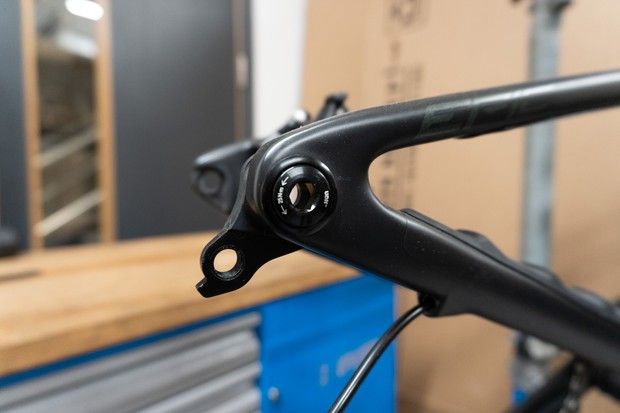When it comes to maintaining and upgrading your bike, ensuring compatibility is crucial. Universal Derailleur Hangers (UDH) play a vital role in the proper functioning of your bike’s gears and drivetrain.
What is a Universal Derailleur Hanger (UDH)?
The UDH is a small metal component attached to the rear dropout of a bicycle frame. Its primary function is to hold the rear derailleur in place, which, in turn, controls the movement of the bike’s chain, facilitating gear shifting.
The Importance of UDH Compatibility
Having a compatible UDH is crucial for smooth gear shifting, overall bike performance, and rider safety.
If your UDH is not compatible, it can lead to issues such as poor gear shifting, misalignment, and potential damage to the derailleur or frame.
Therefore, it is essential to determine whether a UDH is compatible with your bike before making any replacements or upgrades.
How to Identify UDH Compatibility?
To determine UDH compatibility, follow these step-by-step guidelines:
1. Check the Bike Manufacturer’s Specifications
Start by referring to your bike’s user manual or visit the manufacturer’s website to find detailed specifications about the frame and its components.
Look for information specifically related to the UDH model used on your bike.
2. Examine the UDH Shape and Design
Different bike models use different UDH designs, and some may have distinct shapes or hole patterns.
Carefully compare your current UDH with images or specifications provided by the manufacturer to identify any differences.
3. Measure Hole Spacing and Thread Size
Using a caliper or a ruler, measure the distance between the holes on your UDH. Additionally, determine the thread size of the mounting holes.
Compare these measurements with the specifications of compatible UDHs provided by the manufacturer.
4. Look for UDH Part Numbers
Often, UDHs have part numbers engraved on them. Note down the part number of your current UDH and cross-reference it with the manufacturer’s compatibility list.
5. Seek Professional Advice
If you are uncertain about identifying the compatibility of your UDH, visit a reputable bike shop or consult a professional mechanic. They can provide expert guidance based on their experience and knowledge.
Signs of Incompatible UDH
Sometimes, riders may experience issues that could be indicative of an incompatible UDH. Look out for the following signs:
- Excessive Chain Noise: If you hear unusual sounds while shifting gears, it may be a sign of an incompatible UDH causing misalignment.
- Inconsistent Shifting: Difficulty in smoothly shifting gears, chain slipping, or inconsistent gear engagement could be due to an incompatible UDH.
- Derailleur Misalignment: Visual inspection of the derailleur alignment relative to the cassette and chainrings can help identify any compatibility issues.
Selecting the Right UDH for Your Bike
Now that you understand the importance of compatibility and how to check it, let’s explore the process of selecting the right UDH for your bike:
1. Research Your Bike Model
Find out the specific make and model of your bike, along with its year of manufacture. This information will help you narrow down compatible UDH options.
2. Identify UDH Options
Based on your bike model, search for UDH options recommended by the manufacturer or reputable third-party brands known for their compatibility with various bike models.
3. Consider Material and Design
UDHs are available in different materials such as aluminum, steel, and carbon fiber. Consider factors like durability, weight, and design when choosing the right UDH for your needs.
4. Purchase from Reputable Sellers
Buy UDHs from authorized dealers or trusted online retailers to ensure you receive genuine and compatible products.


